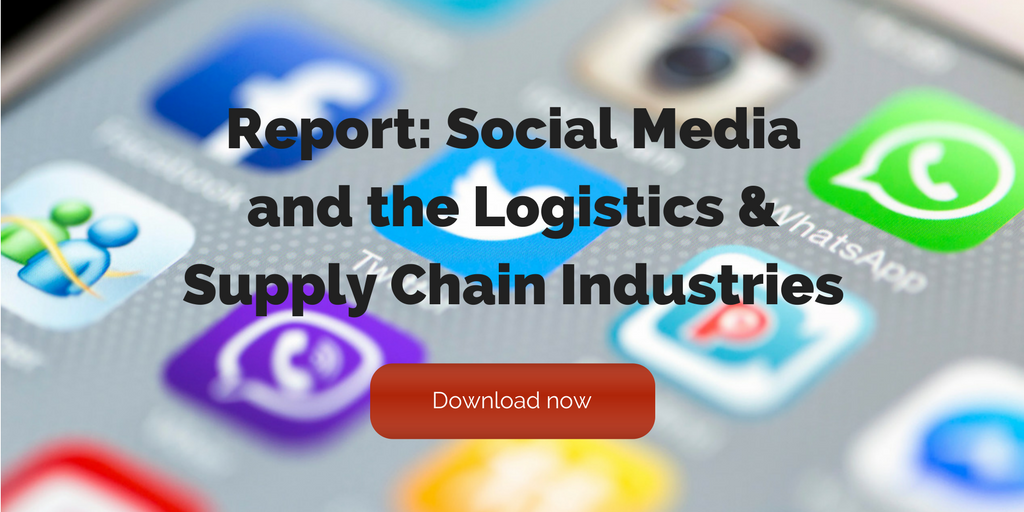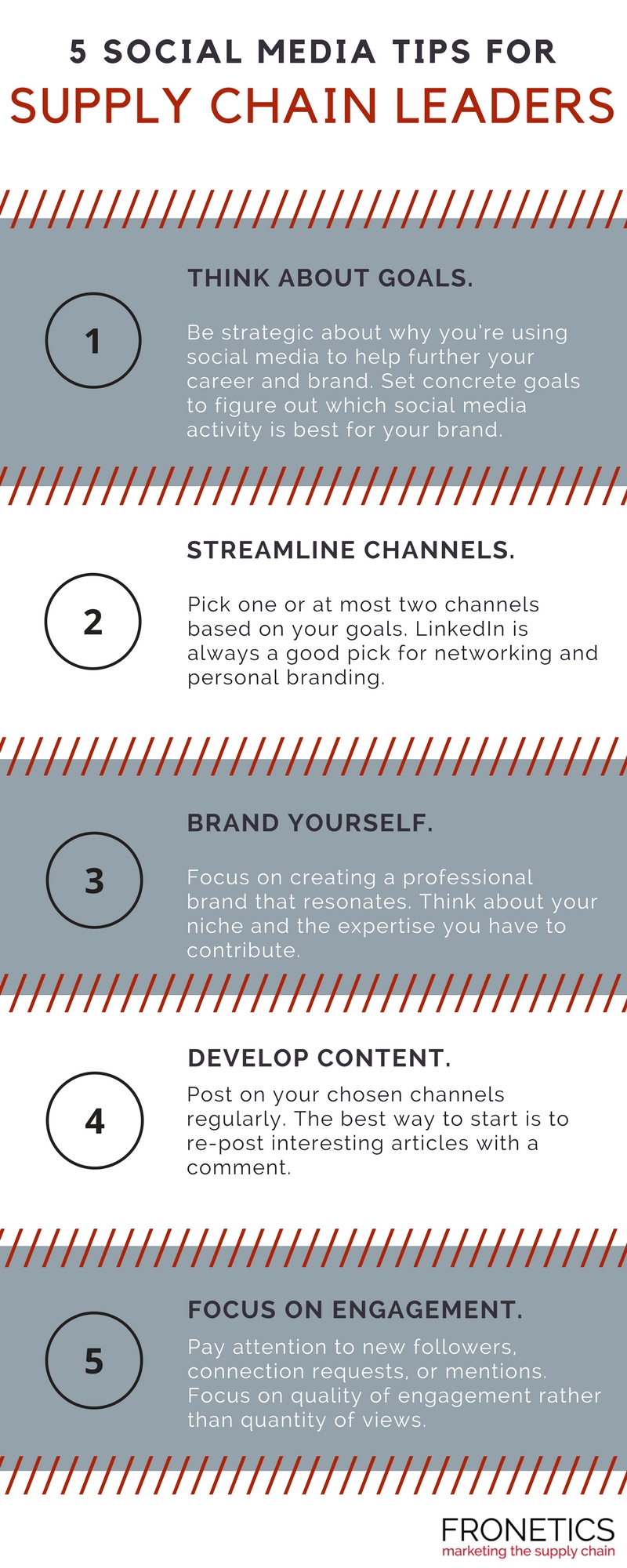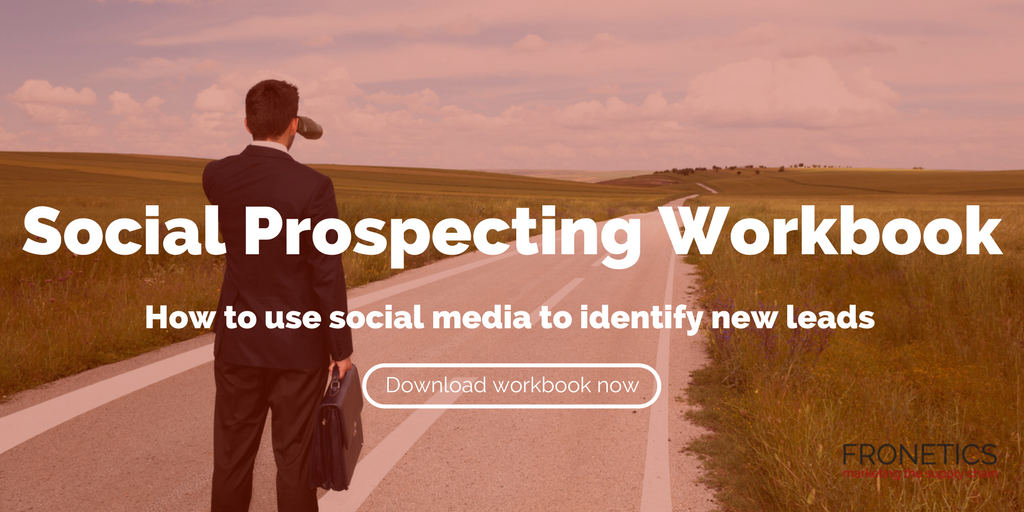
by Fronetics | Apr 30, 2018 | Blog, Content Marketing, Current Events, Marketing, Social Media
Also in social media news April 2018: Instagram shuts down API platform, LinkedIn’s updates aimed at helping B2B marketers, and Facebook expands split ad testing.
Facebook has been busy creating updates focused on user security in the wake of the Cambridge/Analytica scandal. Since the data breach, Facebook CEO Mark Zuckerberg has committed to protecting user’s information and outlined several initiatives in the works to “prevent abuse, protect personal data and privacy, improve security, and take down fake accounts.”
One of the key takeaways from the scandal has been the lack of regulations overseeing business practices, as it applies to user data. It is safe to say that new regulations are looming in the not-so-distant future.
[bctt tweet=”“Computer science is undergoing a ‘reckoning’ and an ‘ethics crisis’ not unlike what has happened in chemistry with dynamite, in physics with nuclear bombs, and in human biology with eugenics.” Yonatan Zunger” username=”Fronetics”]
Google engineer Yonatan Zunger wrote in the Boston Globe, “Computer science is undergoing a ‘reckoning’ and an ‘ethics crisis’ not unlike what has happened in chemistry with dynamite, in physics with nuclear bombs, and in human biology with eugenics.” These regulations could have major impacts for advertisers, who have been capitalizing on data collected by social media platforms. Regulations that limit the tracking and retaining of user data will especially affect target advertising that relies on capturing data from target audience users.
Fronetics is staying on top of these changes and will continue to provide social media recommendations and updates on regulations.
Here’s your social media news for April 2018.
Facebook Changes Include More Transparency Around Ads and Pages
Facebook is working to make important changes that are aimed at increasing transparency and authenticity. “By increasing transparency around ads and Pages on Facebook, we can increase accountability for advertisers — improving our service for everyone,” says Rob Goldman, VP, Ads, and Alex Himel, VP, Local & Pages, in a statement on Facebook’s website.
Last October the social media giant rolled out restrictions on electoral ads on Facebook and Instagram. This April, Facebook is expanding those restrictions to all “issue ads” — for example, political topics — so only authorized advertisers that have been approved by Facebook can run issue ads. These changes are aimed at preventing any additional user data and privacy issues.
Facebook is also enforcing a verification process for all admins managing pages with large numbers of followers. “Those who manage large Pages that do not clear the process will no longer be able to post. This will make it much harder for people to administer a Page using a fake account, which is strictly against our policies.”
YouTube Introduces TrueView Ads
YouTube’s new ad format, TrueView for Reach, is its latest update aimed at boosting engagement for advertisers. The format allows advertisers the ability to build ads from 6 to 30 seconds long, with the skip option available after 5 seconds. “Our six-second bumper ads were designed to drive more reach among the audiences you care about, especially as they become increasingly on-the-go. They showcase not only the fun of storytelling in six seconds, but also the benefits of adapting to consumer behavior,” posts Ali Miller, Product Manager, Video Ads, and Khushbu Rathi, Product Manager, Video Ad for YouTube.
Facebook Improves and Expands Ad Split Testing Capabilities
Last October Facebook gave advertisers the ability to create split tests in Ads Manager’s Guided Creation workflow. The new update this month allows users to create tests in Quick Creation flow, making it even easier to manage ads in bulk and test ads against one another. Quick Creation will also feature a dashboard that shows “standard KPIs for the ads in your split test, such as CPM, CPC, CTR and more, to inform your marketing strategy.”
Instagram Cuts Off Older API Platform
In light of Facebook’s data security issues, Instagram announced it is shutting down the API platform, effective immediately. They have also greatly reduced the amount of data developers can access per hour, dropping from 5,000 calls per hour to only 200. Tech Crunch reports Facebook’s bold action to reform its APIs shows it’s willing to prioritize users above developers — at least once pushed by public backlash and internal strife.
LinkedIn Rolls Out Native Video for Sponsored Content and Company Pages
LinkedIn introduced autoplaying native video ads that will appear in the news feed section as stand-alone posts, as well as the ability to include native video on a company page for businesses and publishers. These changes were developed to help B2B marketers grab the attention of their audiences and increase engagement. “While video is a proven and popular tactic to engage decision-makers, the challenge has been finding a quality environment in which to reach them.” The update will be available to all businesses in the next few weeks.
Twitter Expands its Official Partners Program
Back in 2015, Twitter introduced its Official Partner Program, a select set of companies aimed at helping brands increase their ROI on advertising, brand awareness, and scaling customer care. The program has been so successful, Twitter announced it’s expanding the program to include six new partners: Curalate, Jebbit, VidMob, Vidsy, Animoto, and Social Native. “Each provider offers a unique solution that expands the advertisers’ toolset and delivers high-quality creative for brands on Twitter.”
Related posts:


by Fronetics | Apr 25, 2018 | Blog, Content Marketing, Logistics, Marketing, Social Media, Supply Chain
Supply chain leaders should use these 5 social media tips to grow brand awareness and increase your company’s profile as an employer.
Like most busy executives, it’s hard to find time for your daily tasks and projects without adding social media into the mix. But having a presence on social media is no longer optional for leaders. It’s a necessity.
Though branding might not come easily for some supply chain management executives, it is key in today’s digital world for positioning yourself as a thought leader in your industry, as well as gaining positive traction as an employer.
We’ve talked a lot about the supply chain talent gap. Here’s where a consistent, informative social media presence could help you and your company.
Millennials in the workforce are more likely to apply for jobs with companies that have a strong social media presence. They want to work for leaders that are openly posting about industry trends, collaborating with competitors, and working toward innovative products and services. What better way to highlight your role as an industry leader than through social media?
Getting started can be intimidating. There are lots of different social media channels. And even more options regarding content within those channels. Do you start a blog? Post on Twitter? Upload videos to YouTube? It’s not as easy as just writing a few blog posts and throwing them up on Facebook.
So how do you get started cultivating a social media presence? Here are 5 tips to help any supply chain leader.
Infographic: 5 social media tips for supply chain leaders

(Made with Canva)
Don’t let the hype of social media deter you. A strong personal brand is a major asset to any executive or aspiring executive. It doesn’t have to be a chore. It can become a fun and fulfilling part of your work routine, and it pays off. We hope these tips are useful even if you’ve been active on social media in a professional capacity before!
Related posts:


by Fronetics | Apr 12, 2018 | Blog, Content Marketing, Leadership, Marketing, Social Media, Supply Chain
Make the most of your supply chain leaders’ social media accounts by following these steps.
I’ve written many times before about the importance of supply chain leaders being on social media as the face of their brands. Social media presents a huge opportunity for executives to use their relative industry celebrity to be an extension of their organizations.
So you are ready to commit to a more active social media presence (or you’re going to be ghost-posting for your executive). Where do you begin?
We’ve come up with 4 tips for supply chain leaders to making the most of their presence on social media.
4 tips for supply chain leaders on social media
1) Find the right platform (or platforms) for you.
The first thing to consider is your target audience. If you’re looking to reach a young demographic, for example, Snapchat is probably the way to go, as 45% of its users are under the age of 24. Likewise, if your brand would be well-served by live video (hint: it probably will!), Facebook Live and Instagram Stories offer great possibilities.
Next, think about your personal voice, and what type of content you are likely to be posting. Thought leadership can often best be established on LinkedIn. But that doesn’t mean that Facebook, Twitter, and YouTube aren’t also good avenues to present your voice to the world. Pick the platforms that you feel speak most to your audience and best serve your brand.
2) Use your creative side.
Supply chain and logistics leadership requires a tremendous amount of creativity and innovation. Let these qualities shine through in your social media presence! You have the tools to spark more engagement, increase follower count, and make your posts go viral.
This means using your unique voice to be a storyteller, engage your audience, and create a face for your brand. If you need some inspiration, check out these 7 Twitter accounts.
3) Create space for conversation.
Too many would-be social media mavens fall into the trap of posting the kind of content that doesn’t invite interaction. Instead, be a conversation-starter.
First, take a look at your audience and what kind of interactions they have online. You can scan the pages of other leaders in your niche as a reference point.
You can generate interaction and engagement by showing gratitude, listening to your audience, handling queries, posting thought-provoking content, and posing questions in your posts.
4) Avoid controversy.
This might seem obvious, but there’s a fine line to walk between posting or re-posting thought-provoking content and becoming an inadvertently controversial figure.
Keep in mind that, in the public platforms that are social media, all your moves will be under constant scrutiny from your fans, followers, and people in their networks. This means that while cultivating a personal voice, it’s important to maintain a level of professionalism. And stay away from posting anything that can make you a lightning rod for controversy!
Where do you go to follow supply chain leaders on social media?
Related posts:


by Fronetics | Apr 5, 2018 | Blog, Content Marketing, Marketing, Social Media, Supply Chain
Adidas and FIFA have found great success in using social media in supply chain management.
Sometimes, a success story can be a powerful motivator. FIFA and Adidas have been extremely successful in using social media in supply chain management. Here’s how it works for these organizations and why your business should consider it.
FIFA and Adidas
These two brands are a match made in heaven. In fact, their relationship spans the 48 years since 1970, when Adidas began supplying the official match ball for all FIFA World Cup matches. And clearly it’s been working for both brands, as they have recently extended their partnership until 2030.
With a global supply chain consisting of more than 1,000 independent factories around the world, Adidas is harnessing the power of social media as it relates to the supply chain.
How they used social media in supply chain management
In 2014, the brand launched the #allin campaign on Twitter, letting users follow the progress of the official 2014 World Cup soccer ball (nicknamed the Brazuca). The ball even had its own Twitter handle. Videos showed the Brazuca outfitted with cameras and sent on a journey around the world.
As you can imagine, this creative marketing was social media gold. Adidas was able to leverage its partnership with the FIFA World Cup and engage its audience in a meaningful and lasting way.
According to Waterloo blogger Jaime Salinas, “Adidas is using social media to improve their organization’s supply chain management globally by creating transparency, increased visibility, communications and quality control that leads to reduced operational and labor costs.”
For example, the Adidas SMS Worker Hotline allows direct communication with factory workers, bridging the gap that can exist between management and workers. The system allows the workers to have anonymity, ensures transparency in tracking complaints. It also allows correction efforts to happen in real time.
The takeaway
So what can your business learn from this duo’s successes with social media in supply chain management?
“Social media can improve [an] organization’s supplying chain management,” writes Salinas. “It can create more visibility, improve communication, increase control, and reduce operational and labor costs.” This creates a more efficient and steady supply chain, which in turn increases customer satisfaction.
Salinas concludes, “The ripple effect of using social media to improve supply chain management can expand outwardly across virtually internal and external organizations, which is great for business.”
Related posts:


by Fronetics | Mar 27, 2018 | Blog, Content Marketing, Current Events, Marketing, Social Media
Also in social media news March 2018: Snapchat allows branded content ads; Facebook is testing Messenger Broadcasts; and Twitter tests prioritizing news tweets.
With the increasing popularity of automation tools and chatbot technology, social media platforms are working to regulate how brands are reaching their target audiences. Trying to ensure that users aren’t being inundated with spam posts or fake news, Twitter, Facebook and many others are coming out with stricter rules and regulations. This could mean extra work for smaller brands trying to keep up with the latest changes to make sure their content is getting as much reach as possible.
But there are real benefits to using automation tools, especially when it comes to social media management. Facebook, for example, is testing a new Messenger Broadcast that would help smaller businesses, which don’t already utilize chatbots, blast messages to users that have started a conversation with their Pages. These small but helpful updates will allow companies to have a greater reach without extra work for their marketers.
Here’s your social media news for March 2018.
Facebook/Cambridge Analytica scandal furthers distrust
Facebook issued yet another apology to its users after news broke that a quiz app developed by a Cambridge University researcher leaked personal data from about 50 million people in 2014. Political consulting firm Cambridge Analytica, which was affiliated with President Donald Trump’s 2016 election campaign, allegedly used the data to create psychological profiles to influence voters. Users responded with a #deleteFacebook campaign, in which those angered by Facebook’s mishandling of the data are encouraging widespread removal of all Facebook-associated apps, including Instagram and WhatsApp. Fronetics is staying on top of this situation and will continue to provide social media recommendations in light of such reports.
Facebook ends Explore Feed
Adam Mosseri, head of Facebook News Feed, announced plans to discontinue the Explore Feed on the website in early March. Facebook introduced Explore Feed in October as, essentially, a second News Feed that acted as a dedicated place for Pages. User feedback showed that “Explore isn’t an effective way for people to discover new content on Facebook,” and actually made it harder for users in test areas to access important information.
Twitter cracks down on automation and bot usage
Twitter released a new set of rules and regulations that prohibits developers from using Twitter automation and bot programs to simultaneously post identical content from multiple accounts. It also bans users from performing actions — such as likes, retweets, or scheduling tweets — from multiple accounts. “One of the most common spam violations we see is the use of multiple accounts and the Twitter developer platform to attempt to artificially amplify or inflate the prominence of certain Tweets,” writes Yoel Roth on Twitter’s blog.
YouTube adds new live-streaming tools and features
YouTube introduced a new chat replay feature that unfolds exactly as it did when the video was streaming live. Users can now watch videos that originally aired live and follow the conversations that took place alongside of the video, even after the live stream is over. This new feature supports YouTube’s mission to add “ways to watch live videos and interact with your community in real time.”
Facebook tests messenger broadcasts
Facebook is testing a new messaging tool directed at small businesses that haven’t jumped on the chatbot bandwagon. TechCrunch reports that Messenger Broadcasts allow companies to blast a message to anyone who has already started a conversation with them in Messenger. The new tool is currently being tested among a small percentage of Pages in the U.S., Mexico, and Thailand. Facebook hopes to turn the messaging tool into a paid product for small businesses and limit the number of messages that can be broadcast to cut down on spam.
Twitter test makes news the first thing users see in the timeline
Twitter recently confirmed a test of a news reel that would put news highlights at the top of users’ feeds. According to BuzzFeed, Twitter will select news items to appear in boxes at the top of the timeline. Twitter says the test is designed to “highlight the platform’s bent towards current happenings” while making news easier to find. This test comes in the aftermath of Facebook also trying to prioritize news events over Pages, while also fighting increasing fake news.
Snapchat allows branded content ads
Snapchat will now allow publishers to share branded content among the articles and videos they post. “Starting now Discover publishers are allowed to distribute branded content within the Snap Ads that run in their Publisher Stories,” a Snapchat spokesman said in an emailed statement. Snapchat Discover generated more than $100 million in ad revenue for its media partners in 2017, and this latest update will hope to boost even more ad sales.
Related posts:









